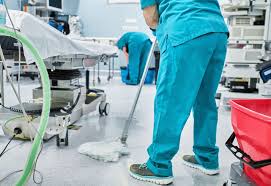In the vast realm of public health, certain aspects often go unnoticed, despite their paramount importance. One such aspect is cleaning. While it may seem mundane to some, regular and thorough cleaning plays a critical role in safeguarding public health. Especially in light of recent global events, the significance of cleaning in disease prevention and public safety has been thrust into the spotlight. This article delves into the intricate relationship between cleaning and public health, highlighting the profound impact of cleanliness on community well-being.
The Interplay of Cleaning and Health
At its core, public health is about preventing disease and promoting well-being. Cleaning, as a practice, aligns perfectly with these objectives. By eliminating pathogens, reducing contaminants, and maintaining hygienic environments, cleaning acts as the first line of defense against a myriad of health threats.
Benefits of Regular and Thorough Cleaning
Disease Prevention: Many infectious diseases are spread through direct contact with contaminated surfaces. Regular cleaning, especially of high-touch areas like doorknobs, railings, and countertops, can drastically reduce the spread of pathogens, including viruses, bacteria, and fungi.
Allergen Reduction: Dust, pollen, and other allergens can accumulate in unclean environments, triggering allergic reactions and respiratory issues. Regular cleaning helps in keeping these allergens at bay, ensuring cleaner air and reduced health risks.
Mental Well-being: Clean environments are not just physically healthier but also mentally soothing. Clutter and dirt can induce stress and anxiety. A clean environment promotes mental clarity, reduces stress, and fosters a sense of well-being.
Reduction in Antimicrobial Resistance: Over-reliance on disinfectants and antimicrobials can lead to resistant strains of pathogens. Proper cleaning techniques, combined with judicious use of disinfectants, can prevent the emergence of these superbugs.
Safety: Clean environments reduce the risk of accidents. For instance, can prevent slip hazards caused by wet floors or spills.
Best Practices in Cleaning for Public Health
Use of Effective Products: Not all cleaning products are created equal. It’s essential to choose EPA-approved disinfectants and cleaners that are proven to eliminate a broad spectrum of pathogens.
Frequent Cleaning: High-traffic and high-touch areas should be cleaned multiple times a day, given their potential to harbor and transmit pathogens.
Training: Those responsible for cleaning should be adequately trained in best practices, ensuring that cleaning is both safe and effective.
Holistic Approach: Cleaning should not be limited to visible surfaces. Air quality should also be considered, using air purifiers, regular ventilation, and ensuring HVAC systems are clean and well-maintained.
Public Awareness: Educating the public about the importance of personal hygiene and cleanliness can amplify the benefits of professional cleaning practices.
The Future of Cleaning in Public Health
With advancements in technology, the future of cleaning looks promising. From UV robots that can disinfect rooms to smart sensors that alert when an area needs cleaning, innovation is set to play a pivotal role in enhancing public health through cleanliness.
Conclusion
The role of cleaning in public health is both profound and undeniable. As the world grapples with health challenges, the importance of maintaining clean and hygienic environments becomes even more pronounced. By recognizing and harnessing the power of cleaning, societies can take a significant step towards a healthier, safer future for all.





















































